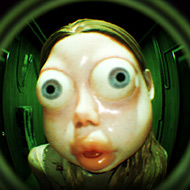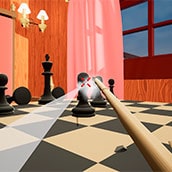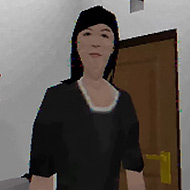

Who’s at the Door? is a tension-heavy psychological game that makes every knock a threat and every choice a test of sanity. With eerie sound design, shifting visuals, and twisted decision-making, it traps you in a fragile routine of fear and suspicion.
The House Doesn’t Feel Safe
In this game, you play as someone stranded in a house with no memory, no context, and no exit—only a door that keeps receiving visitors. As you try to recover your past, strangers begin to appear, each knock followed by a choice: let them in, or leave them out. But the more visitors you see, the less certain you become. Who are they? Why do they know you? And are you even awake?
Who’s at the Door? creates a claustrophobic atmosphere using subtle environmental shifts and a strong focus on your own perception. The house changes. The sounds warp. The faces repeat or blur together. Something isn’t right—and you’re not sure if the threat is coming from outside or from within yourself.
Listening Is Survival
Every interaction in Who’s at the Door? is a clue. Visitors may say something familiar—or something completely out of place. Others won’t speak at all. Listening carefully is key. Recognizing small voice variations, inconsistent phrases, or emotional cues can mean the difference between letting in help… or horror.
• Overlapping Identities: Characters may return wearing different masks or speaking with slightly altered tones.
• False Memories: Your mind creates “evidence” that could mislead you.
• Hidden Tells: Patterns in knocks, background noises, or lighting may indicate danger—but only if you catch them.
The game doesn’t bombard you with action. Instead, it builds dread through pacing. You’re given just enough information to question everything, but never enough to be sure.
Your Choices Shape the Madness
While Who’s at the Door? feels minimal in presentation, its branching narrative paths give it surprising depth. Each choice affects future interactions. Some characters will remember what you did. Others may punish or reward you based on your behavior. And some will twist what you think you remember.
• Letting in the wrong visitor may worsen your mental condition.
• Rejecting help may close off important story paths.
• Taking too long to choose could trigger hallucinations or alternate events.
It’s not just about survival. It’s about understanding what’s happening, and what role you play in this puzzle. The more endings you unlock, the more disturbing clarity you gain. Or perhaps you just fall deeper into confusion.
Gameplay Tips and Clarifications
• How long does a game session last? Each run can last between 20–40 minutes, depending on your pace and decisions.
• Is there replay value? Yes—multiple endings, randomized sequences, and evolving hallucinations ensure every playthrough is different.
• Does the game involve jump scares? Rarely. The horror is psychological and atmospheric, relying on subtle unease instead of loud shocks.
• Can you “win” the game? There are both “safe” and “unsettling” endings, but many paths are open-ended. The goal is to discover who you are—and what you’re hiding from.
Who’s at the Door? is a slow-burn horror experience built on doubt, deduction, and distortion. With each knock, your confidence erodes. With each decision, the truth warps further out of reach. Do you dare to open the door… or will you let fear decide for you?

























